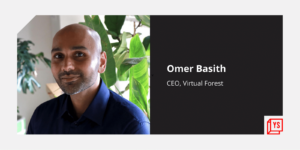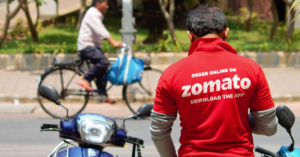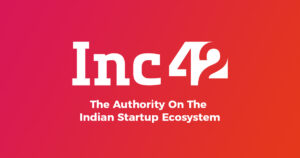
Indian Healthcare is a multi-billion dollar market, however, various challenges plague the ecosystem.
While the India Healthcare market is currently $130-140 Bn+ in size, it is highly fragmented and underpenetrated, with the top 4-5 companies accounting for less than 10% market share across industries like hospitals, diagnostics, pharmacy.
Further poor and inadequate infrastructure adds to the inefficiencies inherent in the system. To top it, low per capita income coupled with low government expenditure (at 1-1.5% vs. 6-10% globally) adds to the general public’s inaccessibility towards quality healthcare.
Unaffordability is a major gap in the Value Chain
Healthcare in India is plagued by the “Iron Triangle” of Access, Cost and Quality. Apart from access, one of the other major concerns, therefore, is affordability. 60%+ of the Indian population has to spend Out-Of-Pocket (OOP) to access healthcare services. This statistic is at <20% across major economies like the US, the UK, Japan, South Korea, Germany, Australia and OOP is between 25-35% in Italy, Brazil and China.
In India, 65%+ of the population is uninsured, including government and private schemes. Even for the 35% population covered, government schemes and most private medical insurance plans do not cover outpatient expenditure, diagnostic and medicine expenses. Covid-19 has further highlighted the gaps in the system and the chasm between the urban and rural centres. This overdependence on OOP is likely to persist in the medium term.
There is a dire need for Healthcare Financing to plug the unaffordability gap
Healthcare Financing, therefore, offers a huge opportunity in India – in particular for the middle income who get covered neither by the government nor adequately by the private insurance (low penetration due to low disposable income) – at $10 Mn+ at our conservative estimate.
Of the total $130-140 Bn healthcare market, $64 Bn+ is the Inpatient market in India. 65-70% of the middle class in India don’t have Healthcare Insurance; Most of the remaining 30-35% are underinsured. OOP for Healthcare is at a staggering 62% (3x global average). This implies a $36 Bn Inpatient OOP market.
Of this 78% is the private market implying a $28 Bn private inpatient OOP market. Further cutting it through typical in-patient hospital bill summary i.e. typical Hospital split across Cash, Insurance and Schemes of 40%, 40% and 20% implies an addressable healthcare financing market of $11 Bn (40% of the $28 Bn private inpatient OOP market).
This $11 Bn can be addressed through Lending or Crowdfunding and not all cash patients would require financing. A large part of this $11 Bn market is addressed through the sale of assets and borrowings from friends and family which calls for a sustainable healthcare financing solution in India.
Taking a cue from the Global Market
Globally, there are multiple solutions to address the opportunity. While the developed economies have a low uninsured population, underinsurance remains a major problem globally as well.
Healthcare lending is still at a low acceptance and there is no concrete market size given people could utilise personal loans towards medical needs (~35% of personal loans in the organized fintech space taken by millennials are for medical expenses).
The largest standalone player in the segment, Bajaj Finance is at INR 600-700 Cr loan book while there are several new-age fintech startups also serving the space viz. Unofin, affordplan, Arogya Finance, Healthfin.
Globally, there is a multitude of fintech players targeting various parts of the healthcare financing value chain – e.g.zero interest, fee-based plans to finance the bills (similar to buy now pay later); driving behavioural change through rewards on the patient side; helping providers manage patient billing through technology intervention etc. on the provider side.
A few known and scaled companies in the space include 1) Cedar (US), an end-to-end healthcare consumer engagement platform for providers, is a $145 Mn+ market cap company. It also helps patients through personalised engagement driving bill clarity and also offers financing 2) PayZen (US) provides interest-free and zero-fee financing through healthcare payment cards to patients and an embedded solution for providers towards patient’s creditworthiness 3) Bend Financial (US) is an AI/ML-based fintech platform helping patients in funding, saving and payments
Why is Health Insurance not able to plug the unaffordability gap in India?
Health Insurance remains the flagship means of healthcare financing, globally. However, overall insurance penetration remains low in India at around 30-35%, including government schemes while private insurance penetration is at a mere 8-10% within which also there is a massive underinsurance problem (99%+ claims paid are <INR 3 lakh while the average cost of treatment is around INR 6-10 lakh).
There have been upcoming innovative on-demand and/or subscription-based health insurance solutions in the market both from the corporate as well as the retail angle which aims at breaking the iron triangle inherent in the healthcare ecosystem in India i.e. affordability (due to high premium), access and awareness.
Some of the startups in the space include Plum, Onsurity, Novo Benefits, Ekincare on the B2B side and Vital, Navi, Kenko on the B2C side. However, the success of these new-age models is yet to be established as market friction remains, the need for intermediaries to continue, and the startups continue to acquire customers at high costs (high CAC).
Within insurance, another area that is seeing increased momentum is the use of blockchain and AI for healthcare financing aimed at end-to-end hassle-free and quick delivery. E.g. Blockchain is making huge inroads into the billing and claims segment; Helps in more secured processing, and easy retrieval of records in a short timeframe thereby taking away the need for intermediaries and also bringing in system efficiencies.
Healthcare Crowdfunding – A novel means to finance healthcare costs without falling into the “Debt-trap”
An innovative solution includes crowdfunding apart from the traditional healthcare lending and health insurance mechanism mentioned previously.
GoFundMe in the USA and Waterdrop in China are key cases in points having seen major success in the respective countries. GoFundMe, a crowdfunding platform based out of the USA, has helped 100 Mn+ campaigners raise $ 15 Bn+ till date through a donor base of 200 Mn+ while China’s largest crowdfunding platform, Waterdrop, had helped raise $5.7 Bn in donations from 340 million people (as of 2020); It has 65%+ market share.
Waterdrop pivoted to being an insurtech player with 79.4 Mn people insured at USD 2.3 Bn First Year Premium (in 2020), in addition, to monetising the crowdfunding funnel. Interestingly, Waterdrop listed on the NYSE at USD 4.7 Bn Valuation in May this year.
GoFundMe has recently announced the acquisition of Classy, a non-profit fundraising software company, to expand its reach towards the Company’s vision “to be the most helpful place in the world”.
India also has adopted crowdfunding in recent times especially for medical needs with the three largest players being ImpactGuru, Ketto and Milaap. There is a massive social impact attached as well with the platforms.
E.g. In recent times, the platforms have enabled multiple fundraisers of INR 16 Cr for Spinal Muscular Atrophy (SMA) cases in children towards the only drug – one-time gene therapy developed by Novartis, Zolgensma. During Covid 2nd wave as well, the platforms acted as enablers for financing high hospital bills and saw an accelerated uptake from both donors and campaigners. The platforms offer equal support to all irrespective of caste, creed, social status, identity – this is especially impactful in a country that to date struggles with inherent inequalities.
Healthcare financing not only targets the root issue of the financing gap for payers but would improve outcomes for providers as well through a) lower drop rates b) upsell opportunities c) lower discounts.
Healthcare Financing, therefore, offers a huge opportunity to make “Healthcare Accessible To All”
There is a massive healthcare financing opportunity globally and in India as the healthcare sector itself sees accelerated growth. The pandemic has further fuelled the disaggregation of the healthcare value chain. There will be an evolvement of models across the value chain targeted towards payers, providers and patients as technological interventions become the base of these models.
The patient journey through the healthcare ecosystem which is currently fraught with challenges at each step will become more streamlined and patients will have access to quality and affordable healthcare.
(The article is co-authored by Sakshi Bansal, Associate, HealthQuad)
The post Healthcare Financing In India: Plugging The Affordability Gap In The Indian Healthcare Ecosystem appeared first on Inc42 Media.










